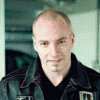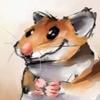Hello guys, I have a question about portfolio for concept artist/2d artist (as for now, 3d is not really my friend). What are potential employers looking for in a portfolio? Should there be mostly sketches, or digital art? What kind of sketches: anatomy? Poses? Dynamic poses? Character/creature design sketches? Should they be more...detailed, or it doesn't really matter? What is the best canvas size? And are everyone looking for someone who's creating art with Photoshop or Illustrator, because I am currently using Sketchbook Pro 7, which is pretty simple and nice software, but i don't know if it's not useless when you're trying to get a job in the industry? Every advice will be appreciated, i know i'm having a lot of questions, but you know...beginner and newbie here. I really don't wanna look like a total idiot on my future job interview, so i'd rather ask now and prepare everything to look as good as possible ![]()
Art Portfolio
Google is your friend
http://guerrilla-games.com/jobs/requirements@view=requirements
http://us.blizzard.com/en-us/company/careers/roles/engineering.html
http://www.gamasutra.com/view/feature/165645/creating_a_winning_game_industry_.php
Some personal advice;
- focus on quality not quantity, better have 2 or 3 things that really 'jump of the page', then a bunch of OK examples
- don't try to widen experience but have depth, what I mean is that game studios want specialists, not generalists
I have hired concept artists to work with me in the past for freelance stuff. I am guessing only the bigger game studios could use one full time. For me as a game developer, I scan the portfolio for 3 things.
- Full Environment Sketches - These were the most important, I need these to give to the level designers
---- for more on this ----
each month Polycount website has a monthly noob challenge for level designers to turn concept sketches
to a full 3d playable scene.
You can get some great examples of how these sketches are used by looking at some of the past contests
it will help you understand how the buyer of your work is going to use it. The threads are great because they
even talk and complain about what sketches are easy to work with which ones are difficult and why.
Here is this months link - Character Model Sketches - A character concept sketch should be in color, on a plain background and posed
contrapposto. This is useful to communicate the idea but not useful to build anything. To build a character I
need Orthographic Views - Front and side in t pose with a clear silhouette. I always check to see
they know how to do all 3 properly. - Action sketches - This is to make sure the animator gets things right. I don't need to see an action
concept of something that is a basic human motion, that can be said with words. (load a gun, punch, jump)
but if I have a stylized character or custom monster that is doing something unique. I definitely need
a sketch so I scan portfolios for action sketches on interesting movements that are so odd it needs they
need to be explained in a sketch.
Movie guys have other needs. I have no idea what they want to see.
Lastly; If you have never seen Feng Zu's videos on youtube, I would highly recommend checking them out.
I spend hours watching him. He is truly a master.
they were so good and inspiring it made me want to be a concept artist. https://www.youtube.com/user/FZDSCHOOL
Just my $0.02![]()
Hey, thank you so much for your answers (and sorry for being a little late with my answer). This Youtube channel is awesome and pretty addictive, so thanks for sharing :) Welp, i've got a lot of work to do, but now i know (more or less) what to focus on.
I have been trying to find full time employment as a concept artist for a few years now myself. Not much success so far, but I think my biggest problem is location.
My portfolio and I have been to a fair number of game developer conferences and trade shows around the world, and I've had professional game developers comment on it, so maybe I do know a thing or 2 about it.
Aside from what was already written, I would suggest you do work on making 3D your friend. Not only will it help you understand the process needed to turn 2D concept art to 3D, it can help you create better work, from figuring out perspective and lighting, to kitbashing models together, to doing concepts completely in 3D.
Don't put anything in your portfolio that looks unprofessional. You may think an anatomy study or a school assignment is some of your best work, but it makes you look like a student and an art director might question how ready you are for work and if you can provide consistent work.
They do like to see work in progress and your thought process.
Resolution doesn't really matter - it depends on what you are comfortable with, and gives you the detail you need. I personally still print out my portfolio on A3 paper because the large size makes a good impression and is a good ice breaker, even though it is heavy and hard to see in low light (when you take it to networking parties ;) )
Finally, make sure to pay attention to how your portfolio is viewed: start with something impressive to grab attention, end with something equally impressive so that people will remember your portfolio by.






